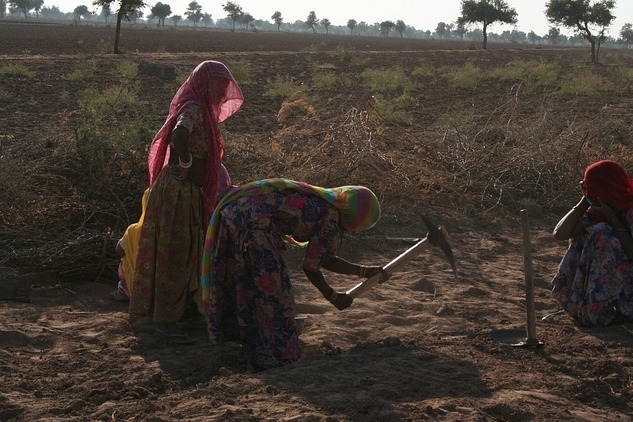
Labour trafficking, exploitation and violence against ‘invisible’ women.
By Karolien Celie, Legal Project Assistant
According to the ILO, almost 21 million people worldwide are victims of forced labour – 11.4 million women and girls and 9.5 million men and boys. While many women are trafficked for sexual exploitation it is reductive to make the assumption that ‘trafficking of women’ is synonymous with sexual exploitation, because it renders ‘invisible’ the increasing number of women who are trafficked for the purpose of labour exploitation in industries such as food services, domestic work, agriculture, and manufacturing. Therefore, on the International Day for the Elimination of Violence Against Women, it is important to raise awareness of labour trafficking and labour exploitation, its disproportionate effect on women, and the root causes that create women’s vulnerability and invisibility in this context.
Discrimination and the exploitation of women’s labour
At the heart of women’s vulnerability to labour trafficking and exploitation is the deeply ingrained systemic discrimination against women. ‘Destination country’ schemes, such as seasonal worker schemes, target men specifically and offer legal, temporary job opportunities, leaving women who wish to support their families, or flee their home country for reasons of conflict or gender-based violence susceptible to unethical recruitment agencies and the informal economy. Educational requirements for certain jobs at home and abroad can also be a barrier for women who often do not have the chance to go to school because of poverty, cultural or religious beliefs. On a global level, UNICEF has estimated that around 31 million girls of primary school age, and 32 million of lower secondary age did not attend school in 2013. There is a wide gender gap regarding who is able and/or allowed to attend school; in South and West Asia, for example, 80% of girls not in school are unlikely to ever start school, compared to 16% of out-of-school boys.
Difficulties obtaining important documents, such as national identity cards, due to lack of support from relatives or distance from their community to the necessary government location is also a factor driving women into risky situations of labour exploitation. Labour traffickers and recruiters exploit women in these difficult situations seeing them as a resource for cheap and often vulnerable labour. Many women are trapped in situations of exploitation, forced to work long hours for low pay, in hazardous, unregulated conditions, and often in remote locations where communication and transportation are not accessible. In these conditions – lacking any kind of workplace protection – women are often sexually harassed as well as physically and psychologically abused. This abuse is often used as a tactic by employers to compel women to work, to threaten and harass them if they try to leave, and to establish authority.
These forms of abuse are disproportionately present in ‘feminized’ sectors, such as the cleaning, care and garment industries – and are not exclusive to the ‘developing’ world but rather take place in virtually every country. In 2012 a Belgian motorway restaurant chain was found liable for the exploitation of female workers within their supply chain. The Eastern European women cleaning the restaurant were barely receiving three Euros an hour, and made to work seven days a week, sometimes for over 17 hours in a row. In this case justice was served for these women, but this is rarely the case.
Our responsibility
NGO programs, government strategies, and international legislation have largely focused on human trafficking for sexual exploitation when it comes to the trafficking of women. Meanwhile the media tends to only report on shocking cases of extreme violence against women in the context of labour exploitation; such as the Indian domestic worker in Saudi Arabia who had her hand amputated by her employer in 2014 because she tried to run away from the employer’s constant abuse. However, incidences of labour exploitation, discrimination and abuse of women in the workplace remain widespread across many countries and sectors. We cannot forget ‘invisible’ women like Rani Mai, from Pakistan who works at a brick kiln, where she is compelled to work from 2am until sundown for virtually no pay. At night, the owners “imprison us”, she states. She has no land, no secure pay, and 6 children to feed – she has no choice but to continue working.
As a society we need to strongly signal to the media, corporations and governments that we demand an end to the discrimination and exploitation of working women, and effective protections for these women. Women should no longer only become visible when an eight story factory collapses onto them, as was the case with Rana Plaza; rather, women should be treated as rights bearers with inalienable human rights. Therefore, on this International Day for the Elimination of Violence against Women, it is important to focus on the root causes which put women in vulnerable situations and lead to abuse and exploitation, especially in this obscure context: the systematic discrimination, the suppression of women’s potential, the pervading idea that women’s lives and health simply matter less. Women should be offered safe and secure opportunities for economic empowerment at home and abroad, in environments that ensure and enforce their equal labour and human rights.
